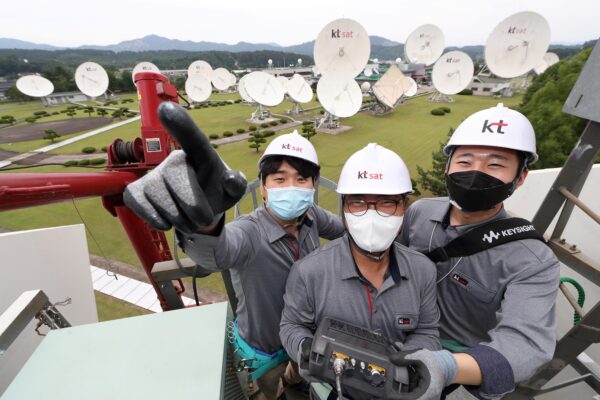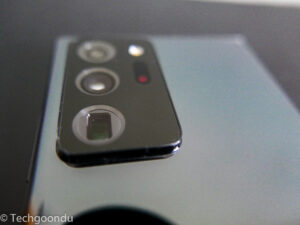Brought to you by SatelliteAsia

As cities get linked up by densely packed 5G networks in the years ahead, the idea of using a satellite high in the sky to transmit data may not be the first thing that comes to mind.
However, there remains an important role for satellites to play in connecting people over large distances.
Using both low-earth orbit (LEO) or high-throughput geostationary satellites, service providers can help stitch together multiple 5G networks around an area.
In a time of emergency, such as when a natural disaster strikes, satellites can bridge the areas where ground-based infrastructure may not be available or is damaged.
Another advantage that satellites have is their wide coverage. Beaming down from space, they can easily reach a large area and a large part of a population.
This is where non-terrestrial networks (NTN) integration is key. There is a need now to create a standard way for satellite NTNs in 5G, to connect up the various types of networks, say experts in the satellite sector.
One advantage of such integration will be to broaden service delivery, especially to unserved or underserved areas, by complementing and extending terrestrial networks, said Ji-in Kim, manager for technology cooperation at KT SAT, a subsidiary of the Korean telecom operator, KT Corp.
“In addition, to guarantee smooth integration between access networks, mobility between terrestrial and satellite networks is very critical in emergency or disaster situations,” he added.
KT SAT, for example, has used a hybrid router to create a duplicated transmission network. This has enabled a satellite and other wireless networks such as 4G and 5G to be integrated closely.
Last year, KT SAT was successful with the world’s first 5G data transmission with a satellite connection. It linked KT’s 5G network and KT SAT’s Koreasat 6 satellite, located some 36,000km above the equator.
Satellites also can connect up the various 5G nodes over a large area, say industry experts.
“Among other things, satellites can also more efficiently send data to external 5G nodes that can cache the information,” said Lon Levin, president and chief executive officer of GEOshare, a space and satellite company.
“Additionally, in the 5G world of massive amounts of data serving critical infrastructure, satellites will be a fundamental part of any backup plans,” he added.
One thing that many satellite proponents will admit is that the distance of a satellite to earth will increase latency and impact the applications they can support.
Even LEO satellites that are relatively near the Earth’s surface will take longer to deliver data than a 5G base station that is just meters away and employing a dense array of antennas.
However, this does not mean that most apps can’t take be served by a satellite. That is because they don’t require the ultra-low latency offered by a 5G network.
“For the applications and services that require low latency, almost instantaneous communications, that will be served by terrestrial only,” said Levin.
“For the vast majority of services and applications that can tolerate some latency such as messaging, diagnostics, information dissemination, satellites will be there doing the great job they’ve always done,” he added.
Even apps that are usually associated with low latency can be served by satellites, according to the technology’s proponents.
Phone calls can be delivered by a satellite because of the slight lag between two persons talking, said Blaine Curcio, an affiliate senior consultant at Euroconsult, a consultancy firm.
The same for streaming videos, he added, because the buffering at the start of a video helps prevent lag while the video is playing.
“Put simply, it’s unlikely that anyone will ever conduct remote surgery using a GEO satellite for their Internet connection,” he said of apps which make up a small portion of data connections.
There might also be new apps where a satellite link will work well with existing ground-based wireless networks to deliver a compelling experience to users.
Curcio gave the example of a virtual reality sports experience, where a football game might be broadcast in extremely high-quality VR.
“It is plausible that rather than using terrestrial Internet to send this data to many places at once, a satellite could more efficiently send the data to hundreds or thousands of nodes simultaneously, in a similar way to video broadcast,” he noted.
“The same could be said about, for instance, self-driving car software updates,” he added.
Check out the latest on satellite technologies at this year’s SatelliteAsia, part of ConnecTechAsia, Asia’s leading infocomm and media event. Register here.






